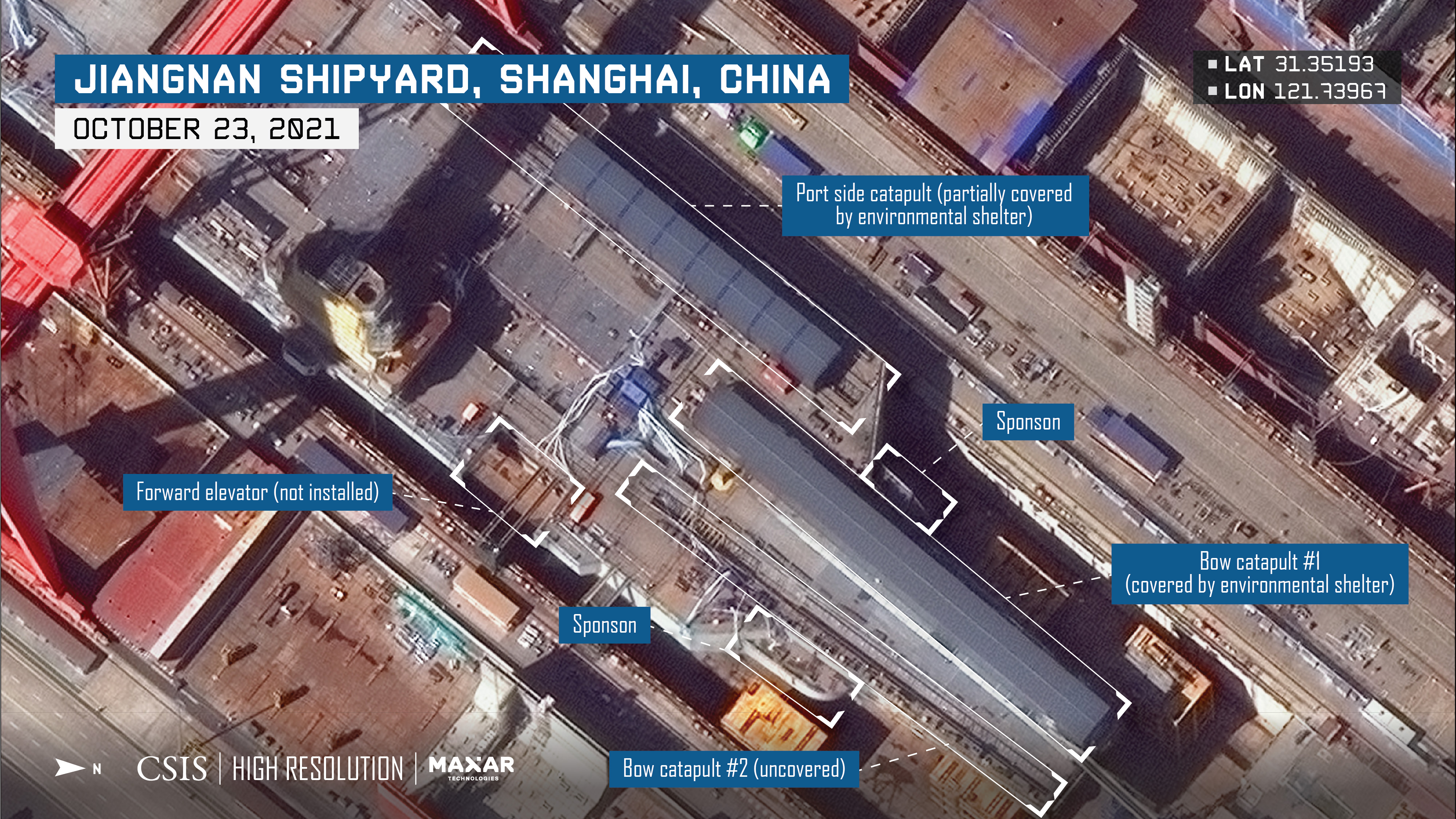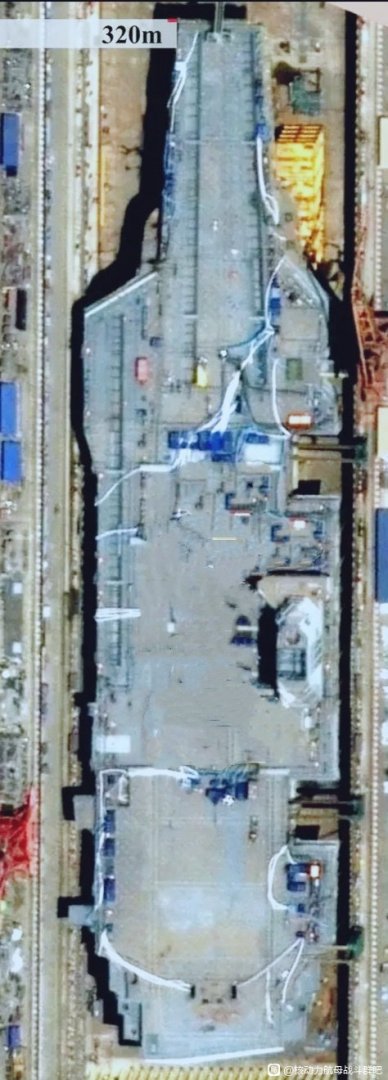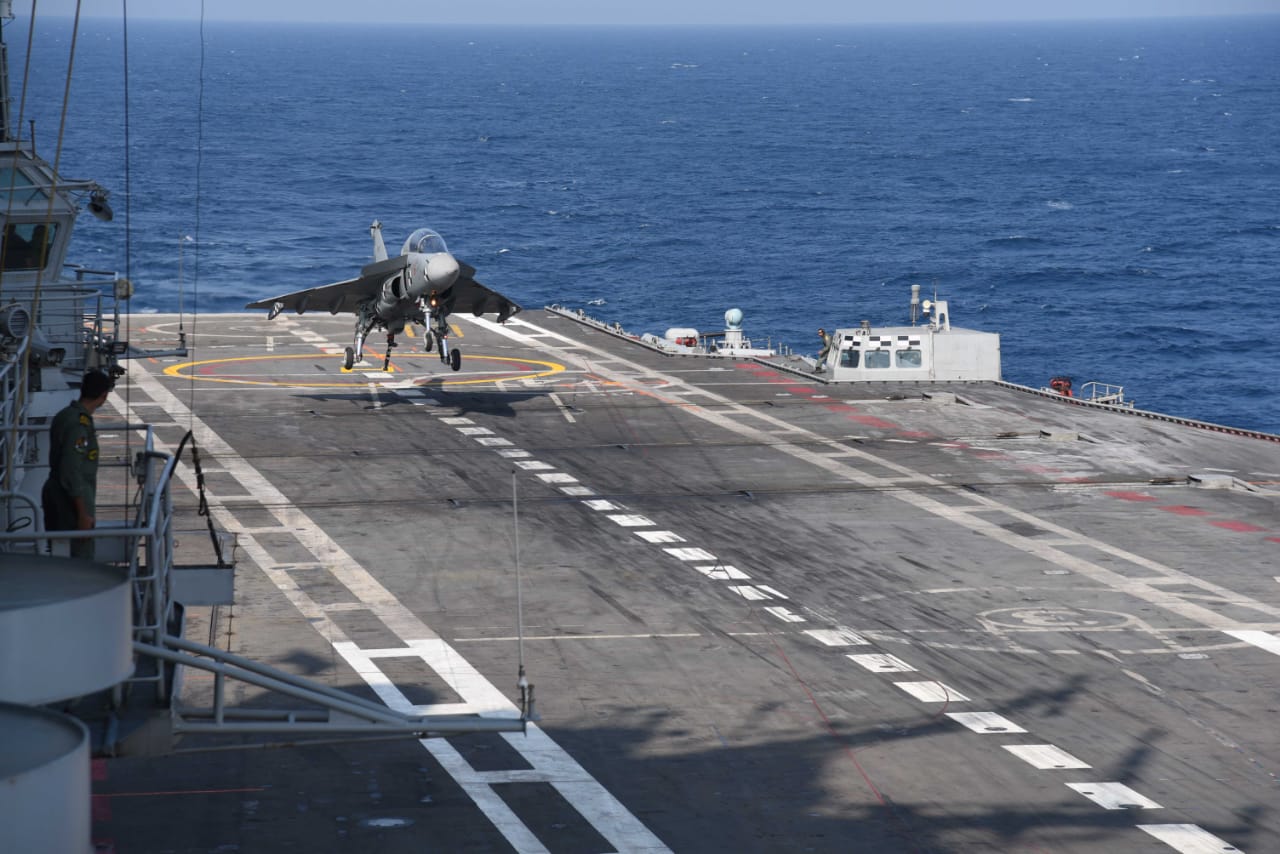The Chinese PLA Navy (PLAN) that so far only has two aircraft carriers is making swift progress on its third aircraft carrier — commonly referred to as Type 003 — if recently obtained satellite images are anything to go by.
PLAN is the world’s largest naval force. It is currently in possession of two aircraft carriers — Liaoning and Shandong. The former is built using the unfinished hull of the second Kuznetsov-class Soviet-era carrier that China bought from Ukraine in 1998.
“Enormous Strain On American Hegemony” – US Promoting China Threat Theory To Raise Military Budget, Mobilize Allies – Experts
The carrier, whose subsystems were procured from indigenous suppliers, began service with the Chinese Navy in September 2012.
The Shandong, the first domestically produced Chinese carrier, was a copy of the Liaoning with some upgrades. This ship was known as carrier 001A and then as 002 before finally being commissioned as CV-17 Shandong. It was rumored that the initial work on the carrier began in 2013, and the ship entered service in 2019.
/cloudfront-us-east-1.images.arcpublishing.com/mco/WSDKPRRYEFHJZHYOBM3SCZOXWY.jpg)
A more compact, redesigned island, minor flight deck, weapons elevator adjustments, along with improvements in the subsystems, distinguish the Shandong from its predecessor.
Locally sourcing subsystems for both the aircraft carriers gave a boost to China’s ability to domestically build large carriers. The US Pacific Command expects China to have four operational aircraft carriers by 2025. The one slated to come up next, perhaps really soon, is the unnamed Type 003 ship.
Focus On Catapults
China, which has the largest navy and shipbuilding industry on the planet today, is likely to gain an edge with Type 003, not really against the US but against arch-foe India, with whom the communist nation has a long border dispute.
This aircraft carrer is almost similar to the US Ford class in length and also has a matching electromagnetic catapult for launching jets. There is a likelihood that this carrier will be deployed to counter enhanced US naval presence in the Indo-Pacific.
China Goes ‘Full Throttle’ With New J-20 Fighter Aircraft But PLAAF Likely To Dodge A Clash With Indian Rafales
The deployment of the carrier would incline towards the Western Pacific, beyond the first island chain running through the south of Japan between Taiwan and the Philippines to the South China Sea.
Commercial satellite imagery of the Jiangnan Shipyard that was captured on October 23 show that the installation of Type 003’s main external components is about to be complete, the Center for Strategic and International Studies reported.

In the latest photographs, it appears that work on two of the three catapults on the carrier is underway. One of the bow catapults is still covered by environmental shelters, suggesting that work surrounding the system’s installation and testing is ongoing.
Type 003’s Catapult Assisted Take-Off But Arrested Recovery (CATOBAR) launch system will allow the PLAN to launch heavier aircraft, especially jets with full fuel and weapons payloads, rendering the vessel more useful in an operational or combat scenario.
The system can also be used with larger aircraft that have a lower thrust-to-weight ratio. It is rumored that China has developed an electromagnetic launch system, rather than a steam-driven one. This is similar to the one onboard the US Navy’s new Gerald R. Ford-class of carriers.
Catapults will allow new aircraft, such as the early warning & control aircraft (AEW&C), the KJ-600, and the carrier version of FC-31, to be carried on the ship. However, since the FC-31 is likely to take a while to enter service, the carrier might commence operations with a catapult capable version of the J-15.
Work Put On Fast-track
Over the past few weeks, there has been a very noticeable shift in the visual appearance of this upcoming carrier itself. Between September 18 and October 23, workers sealed shut two large openings present on the vessels.
These gaps were in place to allow large internal components like engines and powerplants to be put in place in the hull. Their closure implies that these internal components have been inserted.

Looking at the developments, three CSIS experts have concluded that China could launch the aircraft carrier in three to six months. However, they did acknowledge that surmising what is happening inside the ship is difficult. Unseen technical challenges could require more time.
It is currently known that Type 003’s two starboard elevators that will move aircraft between the internal hangar bay and flight deck have not been installed yet. Moreover, in the coming weeks, the vessel’s island may be outfitted with radars. Overall, the development of the carrier seems to be making quick progress.
Finally again some very clear images of the Type 003 carrier under construction. Contrary to assumptions based on some blurry ?and one faked image ? they show, the deck is still not closed, but they reveal some interesting details on the cat-trenches.
(Images via @raz_liu) pic.twitter.com/btIrsHjKK1
— @Rupprecht_A (@RupprechtDeino) August 29, 2021
However, its slightly small overall dimensions in comparison to the US’ latest carrier, and comparatively lesser number of catapults and fewer aircraft elevators that may reduce sortie rates leave some room for enhancements.
India’s Growing Concerns
With India’s first indigenous aircraft carrier INS Vikrant undergoing sea trials, speculation is rife whether New Delhi would approve the construction of the second indigenous aircraft carrier as China continues to expand its naval fleet.
PLAAF’s ‘Deadly Combo’ Of J-16D EW Aircraft & Stealth J-20 Jets Flexed Muscles During War Drills — Chinese Media
Consulting editor of The EurAsian Times, Prakash Nanda explained in his OPED – former Indian Naval Chief Admiral Singh was a vehement supporter of the Navy having a third aircraft carrier to match China (the justification being that while one each would be deployed on the east and west coasts, the third would be in either for maintenance and repairs or on global missions, thus guaranteeing the availability of two carriers at any point of time).
According to India’s maritime doctrine, sea control is the principal concept around which the Indian Navy is structured. Control of maritime space and assuring its security for any length of time is impossible without a standoff capability and this is provided by the Carrier Group.

Two, functional diversity that the Carrier Group can bring to bear includes deterrence, support of amphibious operations, land-attack missions, wide-area domain awareness, command and control of large forces and personnel evacuation.
Three, the Carrier Group can sustain the conditions for long-term offensive presence and power projection. It can, during the adversary’s preparation and build-up phase deny free access to its bases.
Four, the operational agility, firepower and flexibility that the Carrier Group provides to the Commander is unmatched by any other maritime force.
Five, as opposed to land forces and ground-based air forces, maritime power particularly the Carrier Group represents the most potent yet the least intrusive of military power because it operates in and from international waters.
After INS Vikrant, 5 Reasons Why Indian Navy Needs ‘INS Vishal’, A Third Aircraft Carrier To Deal With China
India’s possible third aircraft carrier INS Vishal is expected to support INS Vikramaditya, and INS Vikrant, the 40,262-tonne ship that will be fully operational next year, following nearly a six-year delay.
Both Vikramaditya and Vikrant are “ski-jump” carriers. Therefore, the Indian Navy regards a third “flat-topped” aircraft carrier, the planned 65,000-tonne, with superior power projection capabilities that can dominate the Indian ocean and keep the Chinese in check.
Nanda concludes – if the carriers are becoming obsolete (as many critics argue), due to the “sea-denial strategy” mastered by China’s PLA Navy, why is Beijing itself developing a third aircraft carrier?
- Written by Shreya Mundhra/EurAsian Times Desk
- Contact the author at: shreyya.mundhra@gmail.com
- Follow EurAsian Times on Google News




